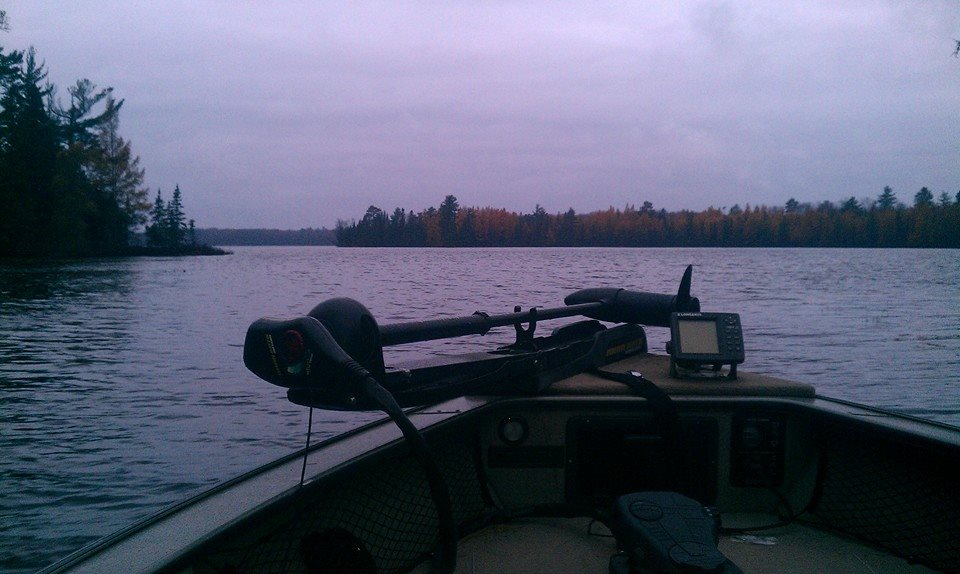The fall season is rapidly concluding for most of us living within the musky range. Additionally the open seasons for muskellunge fishing in some parts of the country are drawing to an end as well. But for anglers who still have time to catch their fish of a lifetime, or have plans to fish again next fall and brave the physically and mentally demanding challenges this great sport of ours brings, I have some insights to share with readers which I hope will lead to a more memorable and successful experience on the water.
1 – Time on the Water
It’s been a strange, but successful, 2013 season. I fished a lot and caught a lot, but not nearly enough to meet my high standards or early season goals; I’m still a numbers guy, and fell about 10 fish short of my personal catch & release quota. But I accomplished much more.
Thanks to time on the water, I’m approaching on setting a personal milestone of spending 100 days on the water up north this year, which is a first…… and I’m not even a guide! Along the way, I’ve spent an estimated 600 hours in my boats fishing for muskies. That’s a lot of time, and without it, I wouldn’t be able to achieve such a milestone, or catch many fish.
I believe that spending hours upon hours of time on your favorite bodies of water will lead to the most successful days of fishing. You don’t have to literally live out of your boats like I sometimes do, but investing more than one full day, or even up to a full week on your favorite waterbodies will make you a more successful musky angler. Time not only helps you pattern musky locations and movements, but to better understand the physiology of the underwater ecosystem and how to best approach muskies, define presentations, and refine your angling techniques and mechanics.
As the daylight hours decrease in autumn, understanding fish location and minimizing unproductive water is critical. Additionally, knowing witch baits to throw and when to throw them can be figured out also. For this, time on the water is an essential tool that comes handy in fall. Make the most of every opportunity you get.

2 – Moon Phases and Feeding Windows
I’m a science guy when it comes to understanding the success behind my fishing and theorizing why certain things happen, how they happen, and how muskies are triggered to bite. I like to analyze a lot. Patterning feeding windows and paying attention to the moon phases definitely helps me catch more fish. In order to do so, and to have a great shot at big fish, maximize your fall fishing opportunities by planning your fishing around the moon phases and feeding windows. I know that personal schedules and vacation time dictates fishing opportunities for most anglers, but take it to the next level by scheduling your trips around these two events.
I had a pretty good month of October…… other than a week that was loaded with bad luck with losing rods overboard and not seeing a single fish for a week. Hey, it happens to everyone at some point, right? Getting to the point of catching fish, my first week of the month in Northern Wisconsin was exceptionally good as my success was greatly attributed to the new moon period and morning moon-rise periods. In a period of four days, I put ten muskies into the Frabill net, won my first career tournament with friend and fishing partner Steve Peterson, and saw a lot of fish in such a short period of time. These four days of fishing was the best I’ve had it on our inland waters of Wisconsin the entire year!


I’ve always been a believer in the moon game. I have observed that musky activity levels and the number of fish boated correlate with the clockwork of the moon. I’ll let you guys ask Steve what he thinks about the moon as I even turned him into a believer. When we won our tournament by blindly fishing on a new lake to us (without any pre-fishing whatsoever!), we encountered a ferocious early morning feeding window in which Steve lost an unimaginable four muskies within the first 45 minutes at the first spot we fished. Want to know the reasoning behind this flurry of action? Looking on the map, I knew the spot was good, but the 8am moon-rise period took place at the same time. It’s no excuse, but a factor. The moon positively influences musky activity levels and feeding moods.

Enjoying the tournament winner.
Besides the moon phase, plan your fall fishing around feeding windows…… and if you want to go even further than that, pound the water during the annual fall cisco spawn in Minnesota, Wisconsin, Ontario and Great Lakes.
This year I’ve had the opportunity to extend my fishing season well into November. You know what takes place in November on many of my best and trophy muskellunge fisheries when water temperatures fall to 41-43 degrees? The cisco spawn. As of late, our angling success has been a result of patterning muskies around the spawning cycle of ciscos (open water pelagic baitfish species. This time of year isn’t for catching numbers, but rather seeking giants. In my opinion late fall is the best time of the year for anyone to musky fish….. Period….. I don’t care how cold the weather is or uncomfortable the conditions may be. What may be caught this late in the season is usually worth the extra effort and aftermath of frozen hands.

Steve Peterson with a girthy Wisconsin fish that was caught from cisco waters.
3 – Use the Right Equipment
Musky anglers have numerous high quality fishing lines available to them at their local fishing tackle retailers. In comparison to maybe a decade ago, there are several more line options offered now than ever before. It is up for you to decide which line and type best suits your needs, and preferred style of fishing.
Having the proper equipment for the right type of fishing is the last critical concept I want to shed light on. For me, Cortland Line is the “Cadillac” of all musky fishing braids and superlines.
Good line will make an angler through smooth daily casting and boated fish, while bad line will break an angler through mishaps, misfortune, break-offs and lost fish. I’ve seen it happen, it has happened, and it’s a very sour experience. Because I want to be at the top of my game my rods and reels are always spooled with the freshest Masterbraid and Spectron lines. My reels are spooled with diversity to tackle any and all musky fishing objectives: With 50 pound line to handle small applications; 65 pound line for bucktails and blades; 80 pound line for just about everything else, and 100 pound for super-size techniques and livebait fishing.

Throughout the fall season, I predominantly fish with 80 and 100 pound lines because they best handle big jerkbaits, gliders, rubbers, crankbaits and pull baits. Additionally, where live bait fishing is allowed and is popular in Wisconsin, they handle the quick-strike rigged sucker with ease. Fishing with the right baits in autumn (as dictated by the fish and conditions), with the proper lines, will allow you to tangle with the mighty musky.
Taking these insights and applying them into your angling plan of attack for the remainder of this fall and next year can help you put more fish into the boat. Take advantage of today’s technology offered by Cortland Line Company to help you boat more muskies right now.

